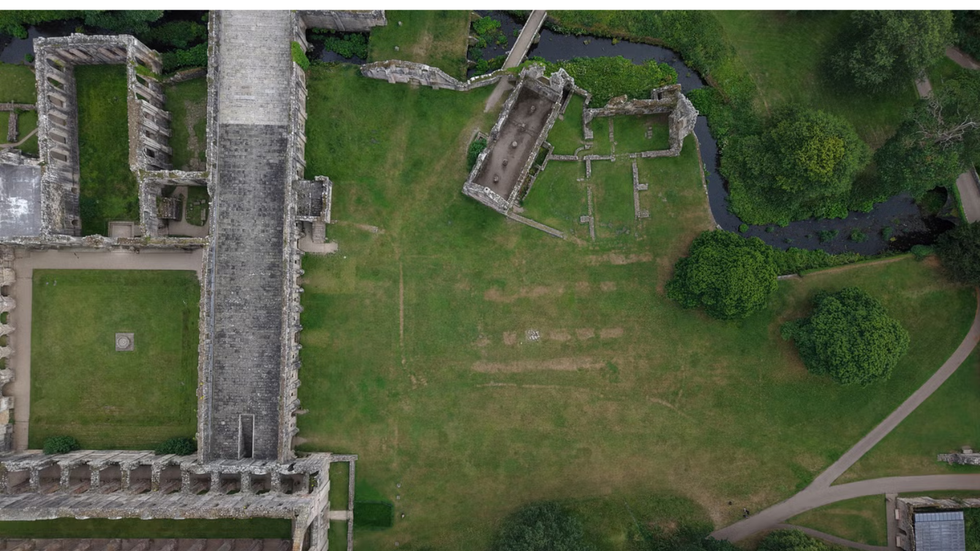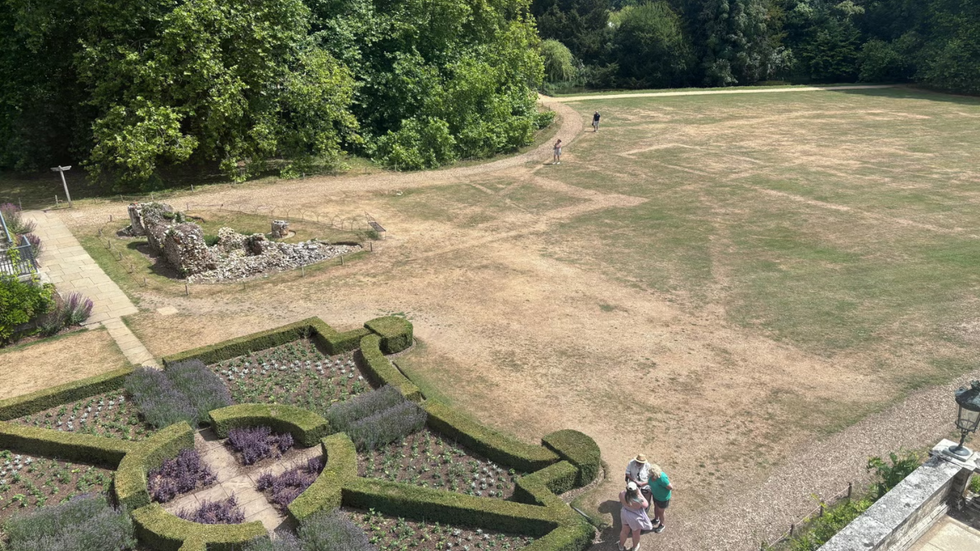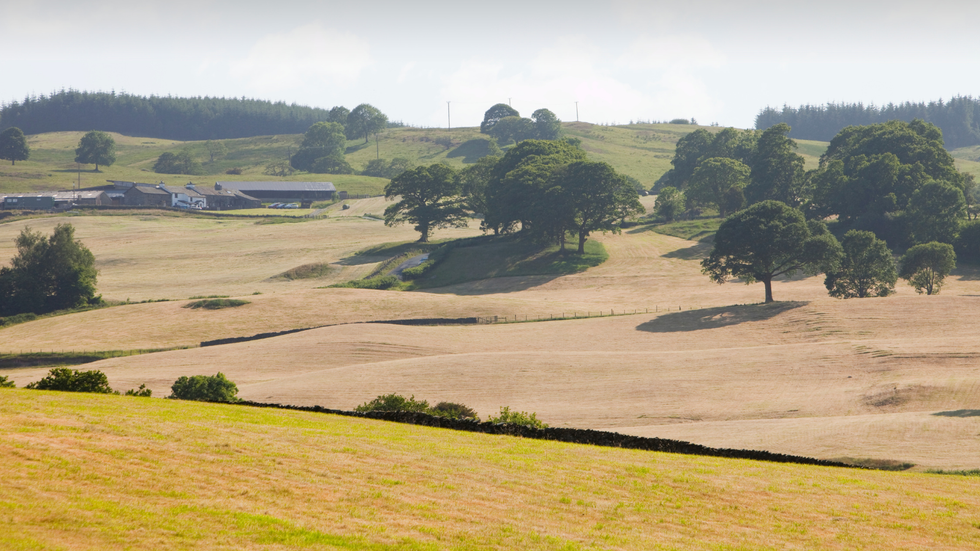Long-lost English monasteries revealed below ground after dry summer weather
The exceptionally dry weather has given archaeologists 'intriguing glimpses' into medieval life
Don't Miss
Most Read
Latest
Britain's hot summer weather has unlocked mysteries surrounding some of the country's oldest monasteries.
At two estates owned by the National Trust, dry conditions have uncovered marks in parkland and lawns which appear to map out underground structures previously thought to be consigned to history.
The remains of the historical structures have been exposed due to grass drying more rapidly over buried walls than in the surrounding areas.
**ARE YOU READING THIS ON OUR APP? DOWNLOAD NOW FOR THE BEST GB NEWS EXPERIENCE**

The remains of the historical structures have been exposed due to grass drying more rapidly over buried walls than in surrounding parts
|NATIONAL TRUST
Archaeologists have now been able to examine the remains of lost monastery buildings at the old Augustinian Priory of Mottisfont in Hampshire, which were deserted as the site was undergoing a remodelling during the 16th century.
James Brown, an archaeologist for the National Trust, said: "These are intriguing glimpses into the oldest history of buildings known here at Mottisfont.
“We have carried out some geophysical surveys but the buildings have never been dug so their secrets remain hidden - except for these rare moments when their outlines appear in the lawns.”
The Augustinian Priory of Mottisfont was founded in 1201, but was later disbanded by King Henry VIII and given to Sir William Sandys in 1536, who transformed the site into a Tudor house.

The Augustinian Priory of Mottisfont was founded in 1201, but was later disbanded by King Henry VIII and given to Sir William Sandys in 1536
|NATIONAL TRUST
In North Yorkshire, more parch marks exposed lost buildings, including a grand guest hall, at Fountains Abbey.
The dry marks revealed that the large hall was divided up by rows of columns into aisles.
Archaeologist Mark Newman said: “We have a good clear view of the guest hall - a building which shows the importance of the abbey’s hospitality one of the monastic duties following Christ’s example.
"It would have had the capacity, with medieval lifestyles, to have accommodated hundreds of people.
ARCHAEOLOGICAL BREAKTHROUGHS - READ LATEST:
- Archaeology breakthrough as evidence of sacrificial ‘trophy body parts’ unearthed
- Archaeologists recover sunken treasures from remains of 2,000-year-old underwater city
- British boy, 7, leaves archaeologists stunned after accidentally discovering Bronze Age burial mound
- Stonehenge mystery blown wide open as new evidence emerges into origins of ancient circle
"It shows that Fountains Abbey has welcomed visitors in large numbers for hundreds of years."
Parch marks are formed during dry spells when shallow soil sitting above structures underground causes plants to wither faster than surrounding vegetation in deeper spoil.
Provisional statistics revealed by the Met Office showed that Britain "almost certainly" had its hottest summer on record this year.
The figures also revealed that the country has only had 72 per cent of its average summer rainfall - 21 per cent less than expected at this stage of the season.

Provisional statistics revealed by the Met Office showed that Britain 'almost certainly' had its hottest summer on record
|GETTY
Large parts of England have faced hosepipe bans due to the exceptionally hot summer, which followed Britain's driest spring in over 50 years.
Earlier this month, the UK's National Drought Group declared "a nationally significant incident".
The National Trust’s head of historic environment, Tom Dommett, said: "This year parch marks are showing more clearly, and have also been recorded earlier in the year, after an exceptionally dry spring.
"While we have seen parch marks at our places for many years, in more recent years the frequency has noticeably increased, including in 2018 and 2022, as climate change increases the likelihood of hotter, drier weather in spring and summer."











